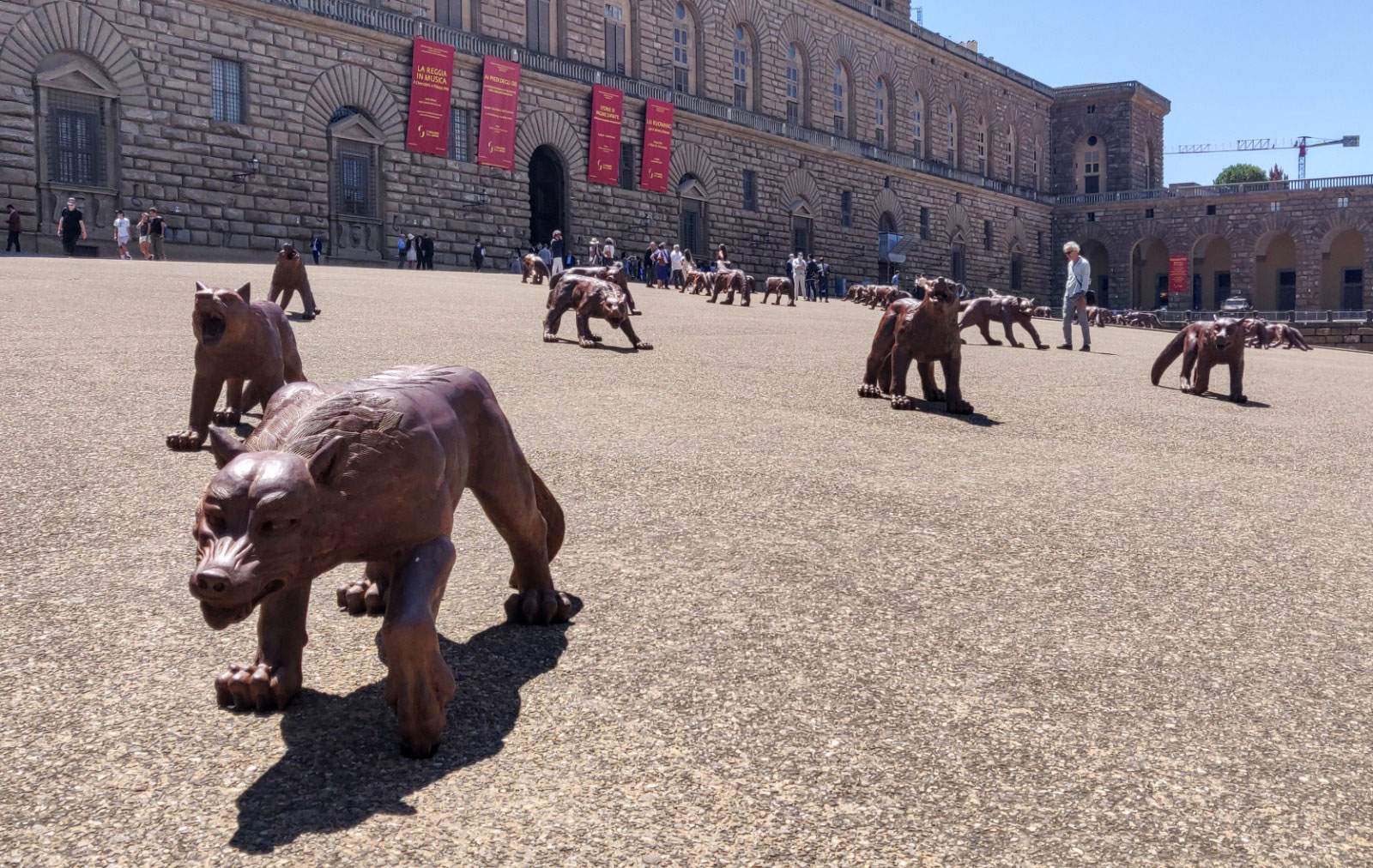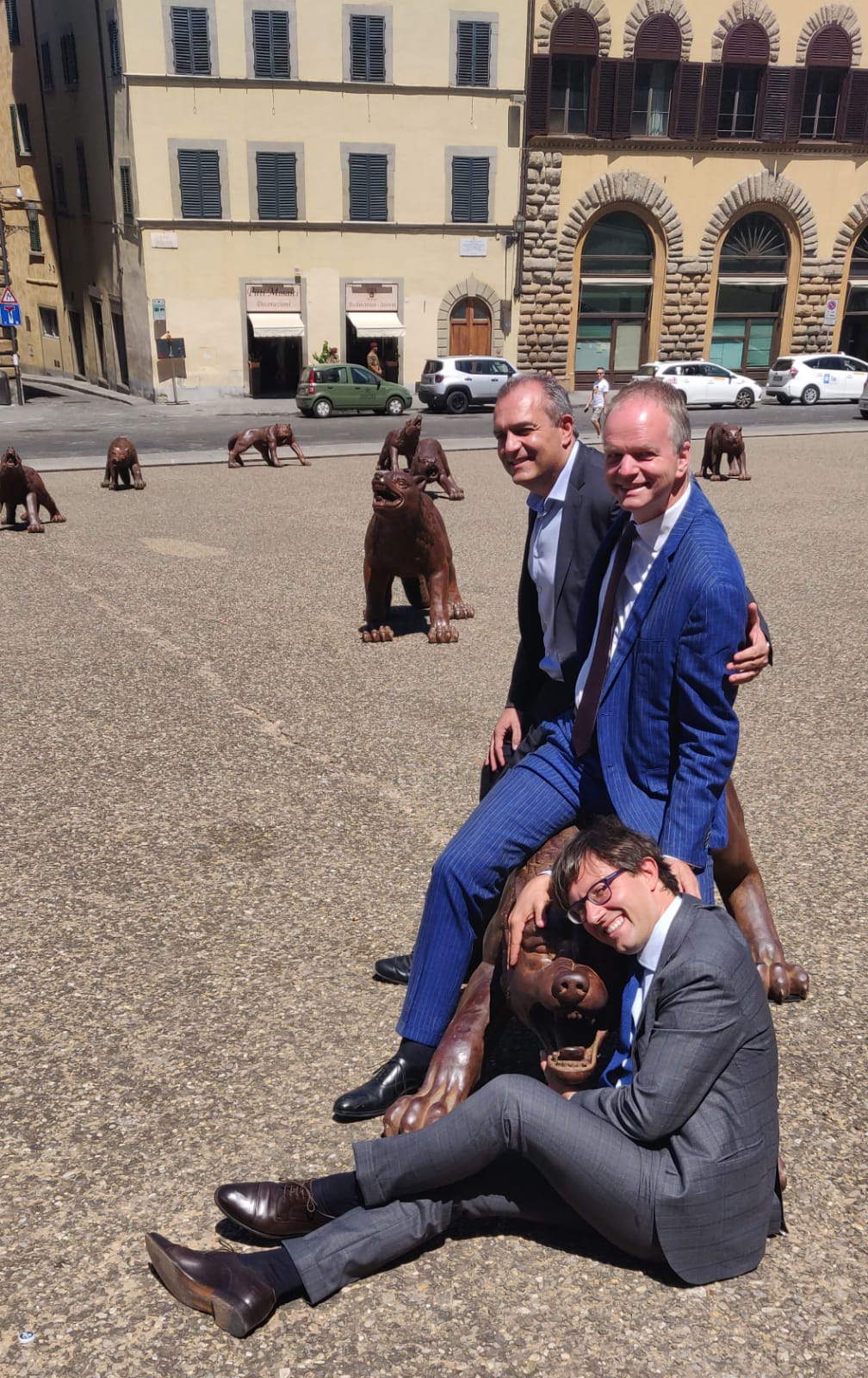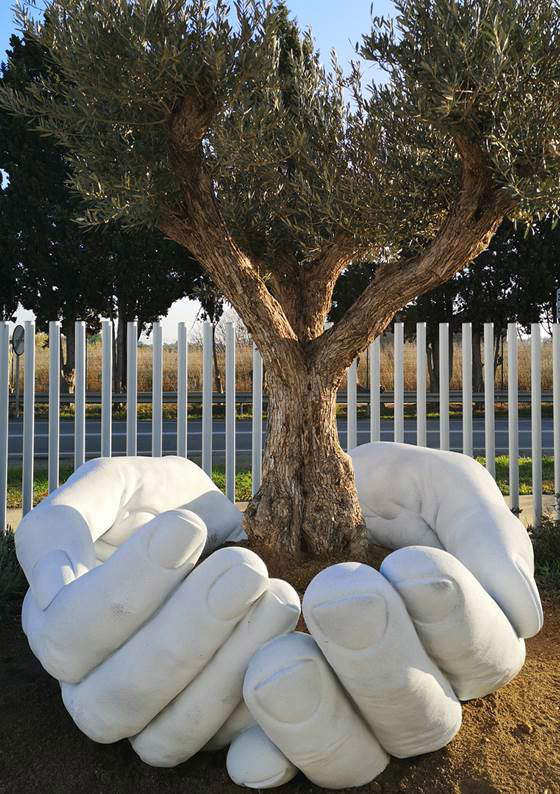Can the Uffizi Galleries, the largest and most visited museum center in our country, and where the best of Italian (and other) art of all time is preserved, indulge in moments of excessive ... relaxation aboutcontemporary art? Doubts come quickly and spontaneously when considering the last two initiatives that the Galleries have welcomed: it is really difficult to consider them up to the standards of the context that hosts them. The first, now known to all, is Chinese artist Liu Ruowang’s wolves, which swooped into Piazza Pitti a couple of weeks ago. The second one, on the other hand, will be unveiled on Tuesday, August 4, at the Boboli Gardens: it is Give, a work by Lorenzo Quinn, a gift of the artist to the city of Pietrasanta, which will be on display in Florence, right at the Boboli Gardens, until November 1.
All sorts of things have already been said about Liu Ruowang’s installation, and the comments have been mostly negative, both about the artist (basically a forty-three-year-old carnage, lacking a solid resume, with little international experience, and who has practically never exhibited his work in level-headed settings) both on these improbable cartoony-looking wolves that are anything but “menacing,” as the mayor of Naples, Luigi De Magistris, who spoke at the opening called him (because the wolves, before arriving in the Tuscan capital, had been in Naples: and since their Neapolitan sortie was evidently not enough, it was well thought to replicate on the banks of the Arno).
But the problem is not only the author’s resume. I have an idea that Liu Ruowang himself has misunderstood his own work. The wolves, the organizers explained to us, are meant to be an allegory of nature’s response to the devastation that humans inflict on the environment, and a moment of reflection on the relationship between human beings and nature, as well as on all the serious environmental issues that are upsetting the world: the annihilation of landscapes, climate change, global warming, and so on. The idea, De Magistris further said, is to “urge the moral duty to protect the environment and keep it in good health for generations to come.” Still, we all have in mind the photos of the opening, with Uffizi director Eike Schmidt astride one of the eastern beasts, and the mayor of Florence, Dario Nardella, sitting on the ground in the act of embracing another, along with the smiling Schmidt and De Magistris. The artist himself, from what I understood, does not disdain interaction between the public and the work. So, the cases can only be two. Either it is a work of serious significance, and then it deserves due respect and a demure approach, and the audience should stay well away to avoid being tempted to laugh at a work that theoretically does not address the problems of the present with the weapon of irony (or if it does, it is not understood). Or, it is an unserious work, and as a result, because of its unseriousness, it is not taken seriously by the institutions themselves.
 |
| Liu Ruowang’s Wolves |
 |
| De Magistris, Schmidt and Nardella with one of Liu Ruowang’s wolves |
 |
| Give by Lorenzo Quinn |
Lorenzo Quinn’s work, on the other hand, has yet to be presented and discovered. I don’t think we need to see it live, however, to realize that, once again, Anthony’s son is going to foist on us the usual slop: his huge hands that have now become his recognizable trademark. Quinn, it will be useful to remember, has made himself known to the general public (which for some reason appreciates his interventions: it is, after all, a very easy art, a fast food art, devoid of consistency and poetry) by sneaking into Venice every other year, that is, in conjunction with the Biennale: of course, he has never been invited to the Biennale (except in 2011, to the infamous Italian pavilion of that year), but twice in a row he has managed to place his ugly big hands in strategic points of the city. Especially last year, when he created quite a few headaches by raining down on the lagoon city a sort of arbor of stubby, ungainly hands, which in his intentions were supposed to remind us of bridges capable of building a better world, but which to me (and I assume to many others) reminded, if anything, of reverse situations, namely certain truncated, triumphalist monuments from Middle Eastern dictatorships (compare them, for example, with theVictory Arch in Baghdad, erected under Saddam Hussein’s regime): these Building Bridges had been placed right in front of the Arsenale, and many believed they were part of the Biennale: and falling on the subject often required clarifying the misunderstanding and pointing out that, no, Lorenzo Quinn with the Venice Biennale had nothing to do, and was simply one of the many who exploited the lights of the world’s leading contemporary art exhibition to get a half-line in some newspaper.
Quinn, like Liu Ruowang, is also an artist who has no prestigious exhibitions or in relevant contexts to his credit, and he is in no way supported by influential critics. Yet he, too, will be able to boast of an exhibition in the context of the Uffizi Galleries in a few days: hosting such events, however, benefits no one, neither the public (many, seeing Quinn at the Boboli Gardens, will think they are admiring the work of a significant artist: this is not the case), nor to the Uffizi itself (if it continues in this way, it will reach a point where, for a contemporary artist, saying that he has exhibited at the Uffizi, where there have also been several exhibitions of contemporary artists of level, will no longer be a certificate of authority). This does not seem to be a problem of the current management, because even years back there were remembered low quality contemporary art exhibitions, really not up to the standard of the Uffizi (Andrea Martinelli’s solo show in the Sala del Camino, in 2013, comes to mind above all): it is probably a structural problem, dictated by the fact that, first of all, contemporary is obviously not the main focus of the Uffizi (but this in itself would not be an obstacle) and that, at least currently, there are no contemporary art experts in the museum’s scientific committee. A vulnus, the latter, which is incomprehensible, if the museum, in its intentions, has that of continuing to propose contemporary art. And which must be remedied as soon as possible, because the Uffizi and its public, on the contemporary, really deserve better.
Warning: the translation into English of the original Italian article was created using automatic tools. We undertake to review all articles, but we do not guarantee the total absence of inaccuracies in the translation due to the program. You can find the original by clicking on the ITA button. If you find any mistake,please contact us.